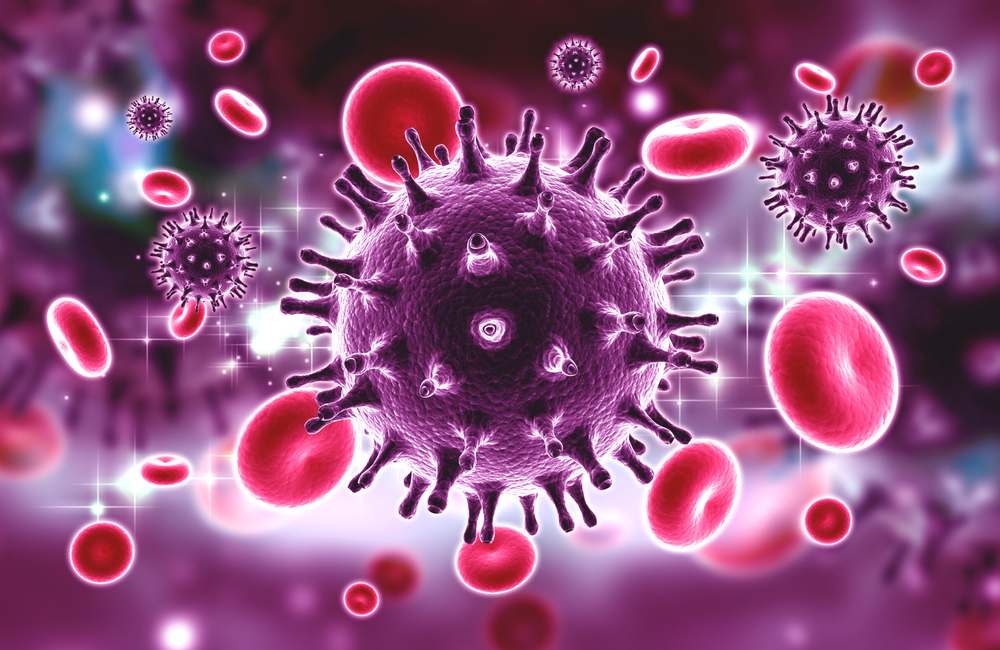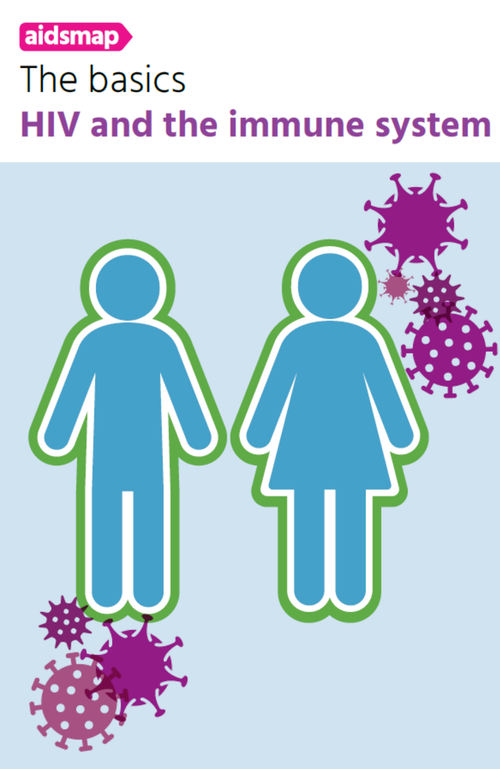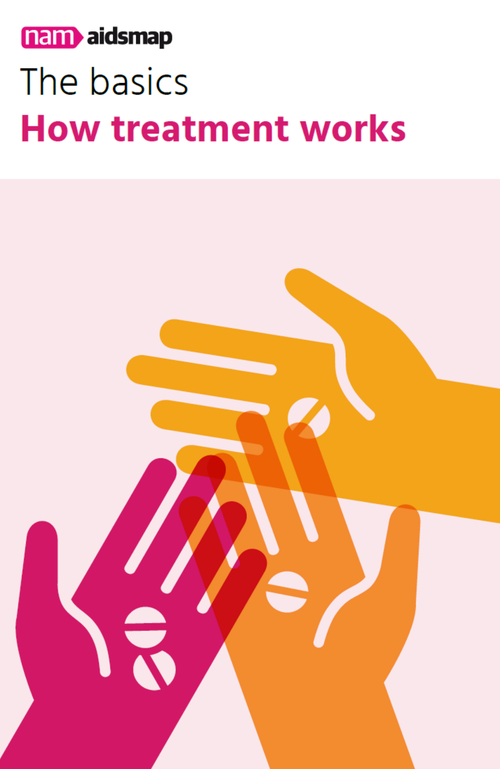
Key points
- The immune system is the body’s natural defence system.
- To survive, HIV needs to infect cells in which new viruses can be made.
- Different anti-HIV drugs target different steps in the process of HIV infecting cells.
The human immune system protects the body. It is made of many different cells that are spread throughout the body, each playing different roles and moving around the body as needed.
Blood cells
There are three major types of cells in the blood. The most common are red blood cells or erythrocytes, which carry oxygen to the body tissues. The second group are white blood cells, or leukocytes. These are the immune cells. The third group are platelets: small, fragmented cells that are essential for blood clotting following an injury.
There are two main groups of white blood cells. The first group are always there and ready to act on any foreign organism immediately. These include neutrophils, eosinophils, basophils, and natural killer cells. The second group called lymphocytes are slow to react, but very efficient in clearing foreign organisms because they work in a targeted way. Lymphocytes can also remember past infections for decades, thus preventing the same organisms from causing repeated infections.
Lymphocytes
There are two different types of lymphocytes. B-lymphocytes (sometimes just called B-cells) produce antibodies. An antibody is a protein that can lock onto a distinctive part of a specific foreign organism. When this happens, the antibody signals to other immune cells to attack the organism. Some antibodies can directly neutralise foreign organisms by immobilising them or (in the case of viruses) blocking their ability to enter cells.
T-lymphocytes (sometimes just called T-cells) are called different names depending on the molecules on their surface. CD4 cells (also known as CD4 T-lymphocytes, or T-helper cells) play a co-ordinating role in the immune system. They help B-lymphocytes identify foreign organisms (which they produce antibodies against). They also secrete substances that enable CD8 cells to multiply. CD4 cells also activate macrophages (see below) to kill certain organisms, including many that cause AIDS-related illnesses. When CD4 cells are destroyed by HIV, all these parts of the immune system are disrupted. CD8 cells (also known as CD8 T-lymphocytes or cytotoxic T-cells) attach themselves to abnormal body cells, notably cells that have been infected by viruses, and kill them.
Other immune cells
Natural killer cells (or NK cells) attack tumour cells and virus-infected cells in a similar way to lymphocytes. But while each lymphocyte can only recognise and attack cells infected by one specific virus, natural killer cells can attack a wider range.
Eosinophils and basophils attack organisms that are too big to be eaten by a single phagocyte, like worms.
The phagocytes are cells that attack and destroy foreign cells by engulfing them. There are two main types of phagocytes:
- Macrophages roam the blood and the body tissues, killing organisms that can cause AIDS-related illness. They also clear defective cells, including old red blood cells and cells infected by viruses.
- Neutrophils leave the blood to go to tissues where infection or inflammation is developing. They mainly attack bacteria and fungi.
Viruses
HIV is a virus. Viruses are microscopic germs that are unable to multiply (replicate) by themselves. Instead, they need to find and infect a cell that will act as a host in which new viruses can be made.
When HIV is outside a cell it is known as a virion and is surrounded by a protective envelope. The envelope surrounds a number of viral proteins and some genetic material – a ‘blueprint’ containing all the information necessary to make new viruses.
Viruses can be divided into two groups: those whose genetic material is made of DNA, and those whose genetic material consists of RNA (such as HIV). No life form uses RNA as a genetic material except viruses. Some RNA viruses need to convert their genetic material into DNA ‘format’ in order to permanently lodge themselves in the host genes. The ones that have this ability are called retroviruses – HIV is a retrovirus.
Fusion
Viruses often target a specific type of cell in their host organism, whether it is human, animal or plant. The main cells that HIV infects are those carrying a receptor molecule called CD4 on their surface. CD4 is found on immune cells, most particularly on T-helper cells and on macrophages.
HIV gets inside these cells by binding to the CD4 receptor using a molecule on the surface of the virus called gp120. Once HIV has bound to CD4, it activates other proteins on the surface of the human cell known as CCR5 and CXCR4 in order to complete its fusion with the cell.
Reverse transcription
Once fusion has occurred, the inside of the virus (the RNA and some important enzymes) is absorbed into the human cell. A viral enzyme called reverse transcriptase performs the process required to convert HIV’s genetic material (RNA) into DNA.
Integration
The newly formed viral DNA is then integrated within the DNA of the human host cell using a viral enzyme called integrase. This allows HIV to reprogramme the human cell to make more HIV.
Transcription
Transcription is a process in which parts of DNA-containing genes are ‘opened up’ and copied into an RNA format (messenger RNA), which can then carry the information to the ‘protein factories’ inside the cell and produce the proteins needed by the cell. When parts of DNA containing the integrated virus genes are copied, the cell starts producing all the proteins the virus particles are made of alongside their genetic material.
Translation
Next, the protein building blocks, which will go on to form the new HIV particle, are assembled within the human cell. These blocks are laid out in turn through the translation of the information contained in the messenger RNA.
Viral assembly
The protein building blocks are then cut into smaller pieces by a viral enzyme called protease. These pieces form the structure of the new HIV particle, including each of the enzymes and proteins needed to repeat the reproductive process. Once this assembly has occurred, the new viral particle buds off the human cell, floats off into the bloodstream and is able to infect other cells.
It is estimated that about 10.3 billion new HIV virions are produced every day in people who are not on HIV treatment.
HIV treatment
Different types of anti-HIV drugs target these different steps of the virus’ lifecycle. The leaflet How treatment works in our illustrated series, The basics, looks at HIV treatment in relation to the HIV lifecycle. The names of the medications that target the specific steps are listed on the page Types of antiretroviral medications.


